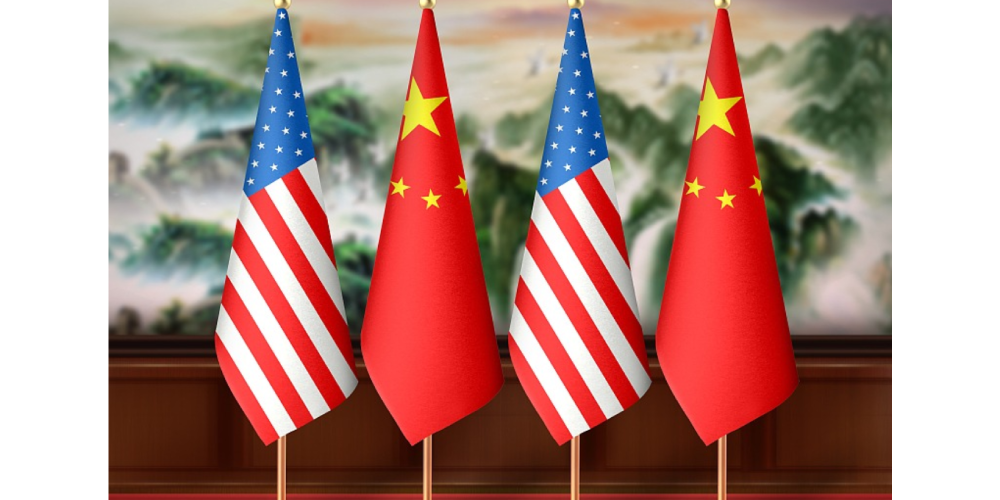CHINA started its policy preparation for a full-scale trade war situation since 2019 based on its assessment of an evolving entwining and chaotic global situation and if it maintains a Gross Domestic Product (GDP) growth rate of 3 per-cent higher than that of the United States in the 2025-2030 period, it will be in an assailable position to withstand the so-called ‘reciprocal tariff’ imposed on it by the Donald Trump administration.Professor Yao Tang from the Peking University’s Guanghua School of Management, in a lecture on Wednesday in Beijing for a group of foreign journalists undertaking a study tour in China, stated that China’s long-term preparations for a full-scale trade war started since 2019 based on its evolving assessment of an international situation of entwined changes and chaos and their implications on China.Professor Yao lectured on ” Navigating the Economic Future: China and the World.
”Yao said President Xi Jinping, in his 2025 National New Year’s Address, highlighted the entwined changes and chaos occurring in the world, saying they pose overlapping risks and challenges to China’s accelerating once-in-a-century transformation – an accelerating transformation that is positively impacting the world.Since 2019, proactive efforts have been made to downsize the real estate sector and in 2021, policies such as the ‘Three Redlines’ and ‘Loan Concentration Management’ which burst the real estate bubble, Yao said.The three redlines policy are aimed at driving a wave of reratings for developers and open up opportunities for bond investors to improve financial health for the real estate sector and address debt build-up in the sector, whilst the latter saw the exclusion of loans for affordable rental housing projects from real estate loan concentration management as banking institutions were encouraged to scale up support for affordable rental housing based on the principles of compliance with laws and regulations, sound risk management and commercial sustainability.

The presentersIn 2020, Yao highlighted that ‘Carbon Peak and Neutrality Goals’ were also proposed to drive the rapid development of the new energy and new energy vehicle industries. The goals are to peak carbon dioxide emissions by 2030 and to ensure a low carbon and circular economy by 2060.Also in 2020, ‘Dual Circulation’ Strategy was introduced, with a new development pattern centered on the domestic market cycle and it saw China’s per capita GDP rise above USD10,000 and its middle-income population exceed 400 million people, entailing mass opportunities domestically, he further highlighted.
Yao said in 2024, President Xi Jinping introduced a new buzzword “new quality productive force”, which refers to an advanced form of productive development led by innovation, breaking away from the traditional economic growth mode and path of productivity development.“It (new quality productive forces) is characterised by hi-tech, high efficiency and high quality and is in line with the new development concept. It is born out of revolutionary technological breakthroughs, innovative allocation of production factors and in-depth industrial transformation and upgrading.
Its basic connotation lie in the leap of labourers, means of labour, objects of labour and their optimised combination.“It is marked by a significant increase in total factor productivity as its core feature. It is characteristic innovation where the key lies in high quality and its essence is advanced productive forces,” he explained.
Yao said the building up of the new quality productive force involves the transformation and upgrade of traditional industries towards high-end, digital and green development.He highlighted that despite China’s ineffective Macroeconomic (Monetary) Policy exchange rate due to weak loan demand from private enterprises and households, and the pressure put on the policy and asset price due to the US’s Federal Reserve rate cuts over the next year, the People’s Bank of China plays a crucial role in stabilising financial markets and the exchange rate.“In a third round of debt swap to reduce implicit debt of local governments, China, as of 8 November 2024, allocates 800 billion yuan annually from newly issued local government special bonds for five consecutive years, “Yao said.
“The balance of local government debt issuance in 2024 was 47.5 trillion yuan: 16.7 trillion in general bonds and 30.
8 trillion in special bonds.“The total implicit debt of the central and local governments amounted to 34.6 +47.
5 =82.1 trillion yuan, equivalent to 60.9 percent of GDP (134.
9 trillion yuan) compared to 56.1 percent in 2023 – a significant increase from the 61 trillion and 50.4 per-cent at the end of 2022.
“The 800 billion yuan to be allocated annually for a period of five consecutive years is specifically for debt replacement, allowing for a total of 4 trillion yuan in implicit debt replacement and “that with a 6 trillion yuan debt limit approved by the Standing Committee of the National People’s Congress in 2024, the resources available for local debt replacement will increase by 10 trillion yuan.“A 2 trillion yuan of implicit debt for urban shantytown renovation, which is due after 2029, will be repaid according to the original contract. After coordinated policy efforts, the total implicit debt to be absorbed by local governments before 2028 will significantly decrease from 14.
3 trillion yuan to 2.3 trillion yuan, greatly erasing debt repayment pressure.”Yao said at the end of 2024, the outstanding balance of central government bonds was 34.
6 trillion yuan, with a ceiling of 35.2 trillion yuan, and in March 2025, the National People’s Congress approved a local government debt ceiling of 52.8 trillion yuan.
He said the Chinese Government still has room to borrow more money as on the balance sheet, its debt is still below major advanced economies – US, Japan Brazil, France, Germany and the United Kingdom.Yao highlighted that in 2024, Bloomberg estimated the hidden debt of local governments in China to be at 9 trillion USD, which was approximately 64 trillion RMB, whilst in the same year, the International Monetary Fund estimated the hidden debt of local governments in China at 60 trillion yuan, which was 50 percent of its GDP.In comparison, he said the United States Federal Government debt stood at 35.
06 trillion USD, which was 128 percent of its GDP (27.36 trillion USD).Yao therefore highlighted that if China maintains a GDP growth rate of 3 percent higher than that of the US in the period of 2025-2030, its economy will reach approximately 75 per-cent of the US economy at market exchange rates, and about 140 per-cent at Purchasing Power Parity (PPP), placing it in an unassailable position, Yao said.
“Assuming that the trade war causes an output gap of 1.52 per-cent of GDP, this would amount to 2.2 to 2.
9 trillion yuan in 2025, and assuming that a nominal GDP growth rate of 7 per-cent, the total demand shortfall from 2025 to 2030 would be between16 and 21 trillion yuan.“Given the central government’s fiscal resources and borrowing capacity, this gap can be fully covered through fiscal expansion, and at the same time, moderately accommodative monetary policy and central bank actions can stabilise financial markets.”Yao highlighted that the first and longest-serving Prime Minister of Singapore, Lee Kuan Yew remarked in 1993 that: “China’s impact on the world balance is so great that the world must find a new balance within 30 to 40 years.
It is impossible to pretend that China is just another big player. It is the biggest player in human history.”By DELI-SHARON OSOIn Beijing, China.
Top

Chinese economy prepared to withstand the Trump ‘Reciprocal Tariffs’

CHINA started its policy preparation for a full-scale trade war situation since 2019 based on its assessment of an evolving entwining and chaotic global situation and if it maintains a Gross Domestic Product (GDP) growth rate of 3 per-cent higher than that of the United States in the 2025-2030 period, it will be in an...











